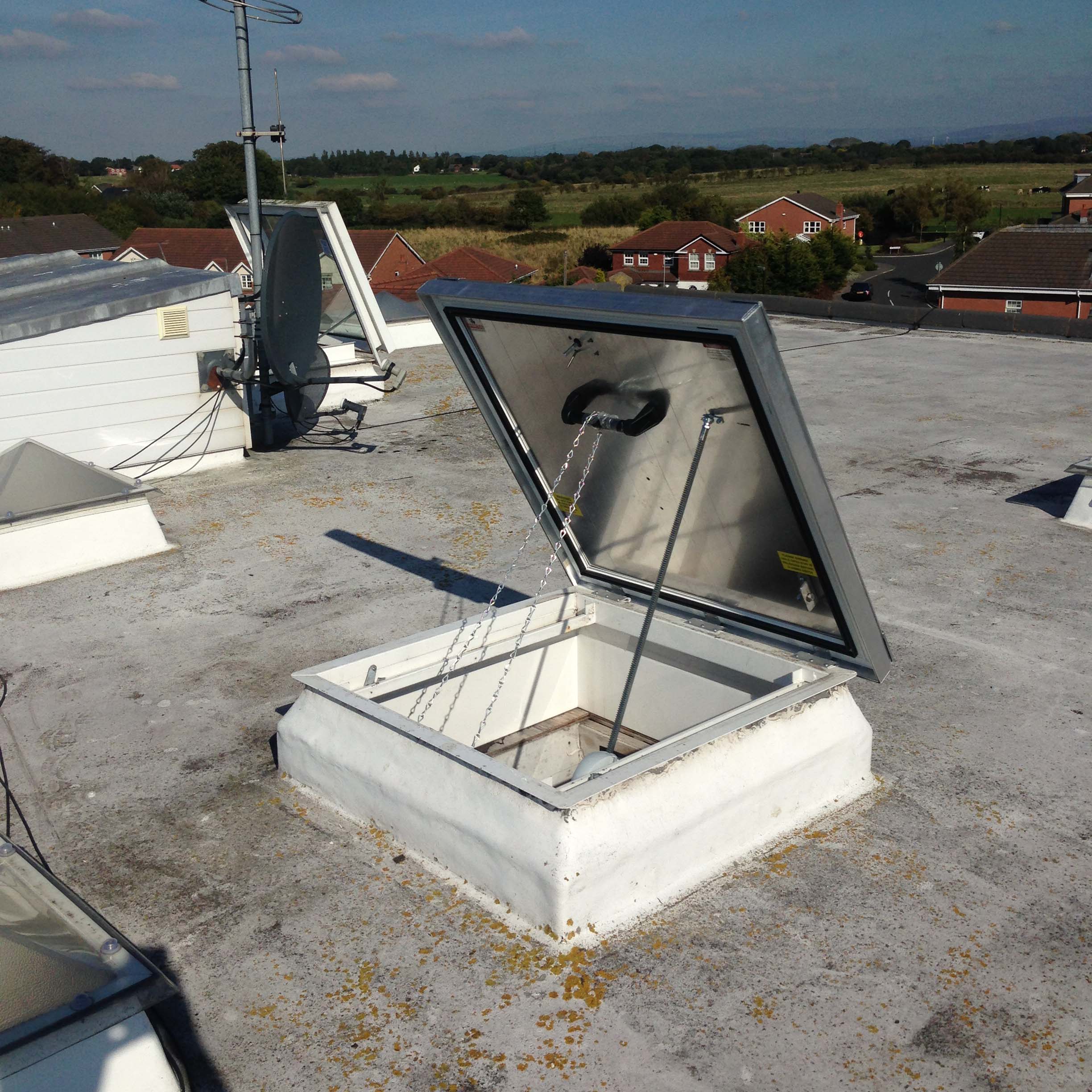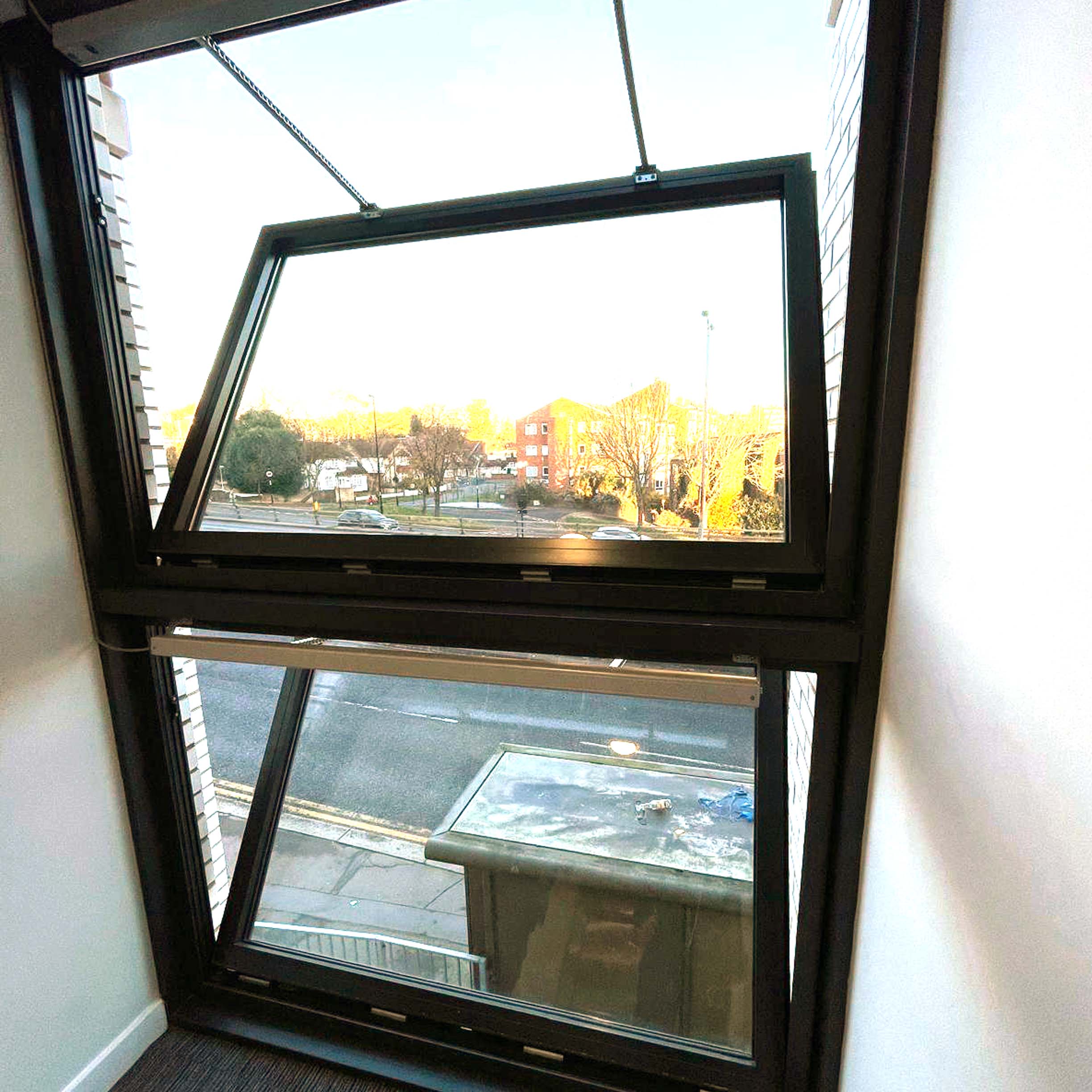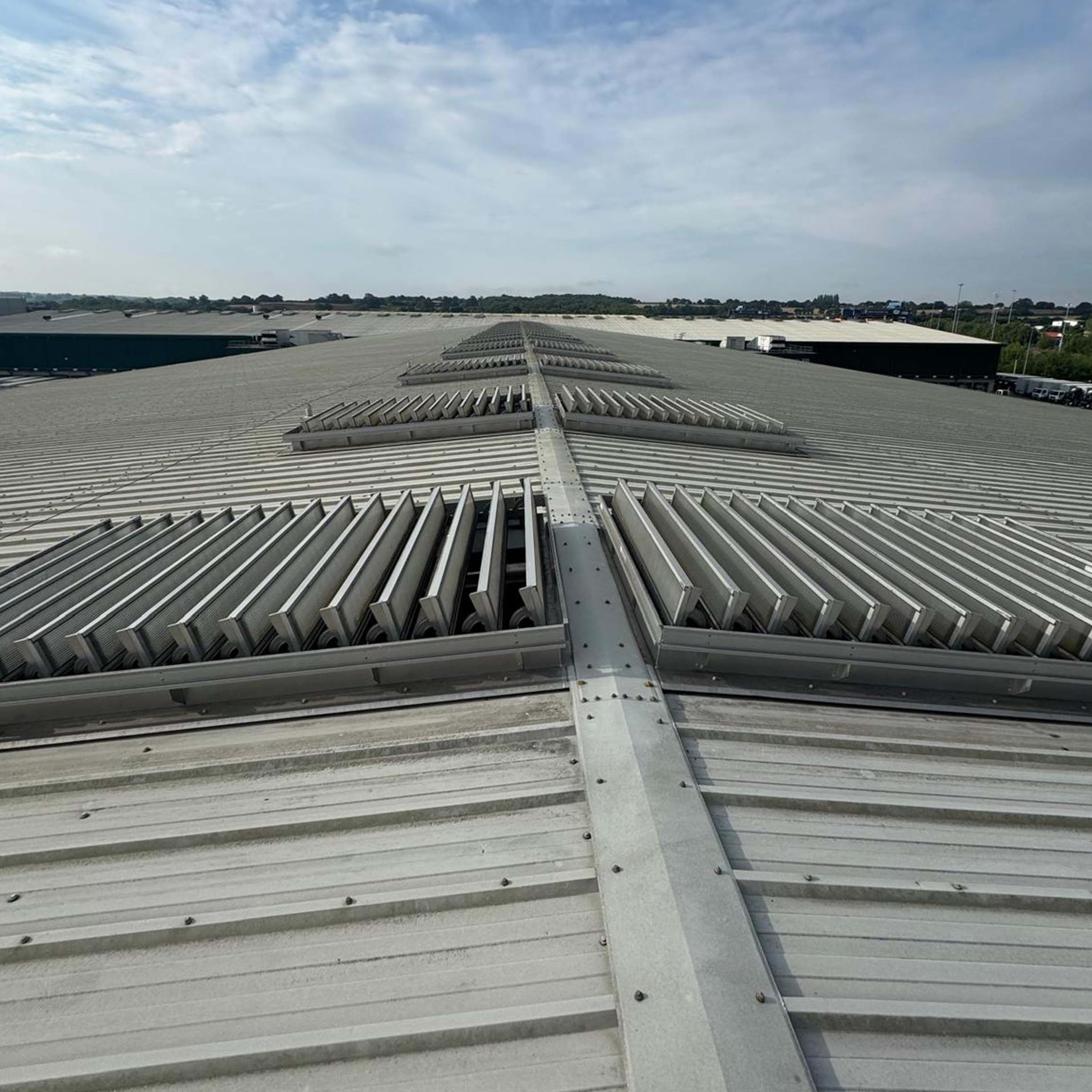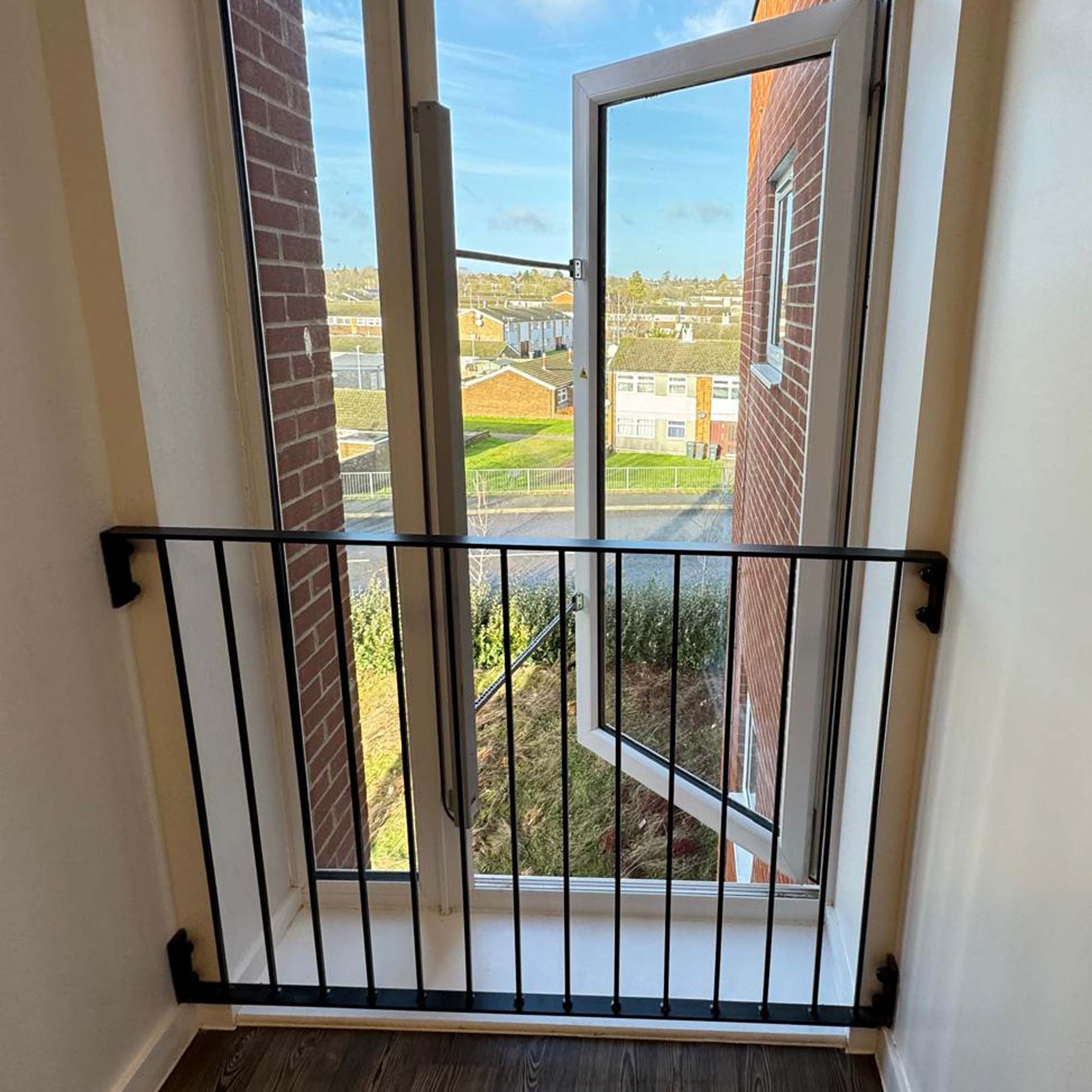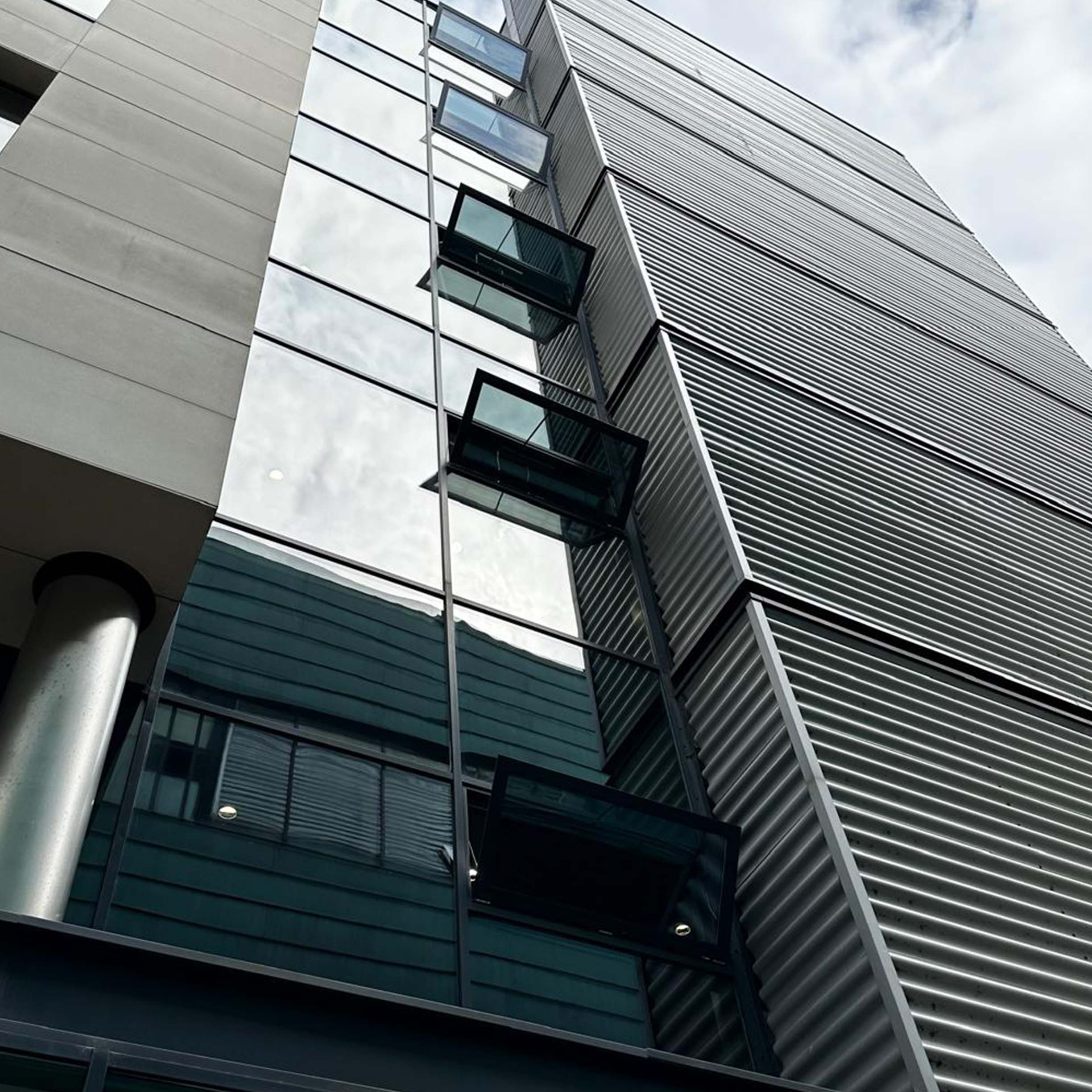Automatic Smoke Ventilation
Smoke, often the most lethal element in fires, can rapidly permeate an entire building, posing a severe threat to occupants. Automatic Opening Vents, which typically comprise of smoke vent windows, roof smoke vents, and automated louvres, hatches, or dampers, play a vital role in preserving access areas during emergencies.
They shield individuals within the building from the dangerw of smoke inhalation, providing them with clear evacuation routes.
Enhancing Safety and Efficiency
The primary purpose of an Automatic Opening Vent system is to facilitate safe evacuation by clearing lobbies, stairwells, and corridors in the event of a fire. Through intelligent smoke control, these systems maximize visibility, reduce the presence of smoke and harmful gases, and ensure a secure path to the nearest means of escape. This not only aids building occupants but also assists emergency services in locating and combatting fires at their earliest stages.
An AOV smoke control system offers numerous benefits, including:
- Keeping escape and access routes free from smoke.
- Improving visibility for firefighting operations.
- Reducing the impact of heat on structural components during a fire.
- Minimizing damage caused by thermal decomposition products and harmful gases like CO2.
By swiftly opening smoke control vents when smoke is detected, AOV systems buy crucial time for occupants to escape and allow firefighters to navigate and combat fires more effectively. This results in reduced response times for fire services and a smoke-free environment for rescue and recovery efforts.
Legal Mandates for Automatic Smoke Vents
Automatic smoke vents aren't just good practice; they are a legal requirement. Regulations such as Approved Document B of the Building Regulations, BS 9991:2011, and BS7346-8 specify the need for these systems in specific settings. These legal mandates encompass offices, multi-storey residential buildings, student accommodations, and other dwellings, making compliance essential for the safety of occupants during fire emergencies.
Whether the building is for residential, commercial, healthcare, or educational use, a smoke ventilation system should be integrated as part of the comprehensive fire safety strategy. Such systems can be either natural, capitalising on the buoyancy of hot smoke, or mechanical, employing powered fans for enhanced performance.
